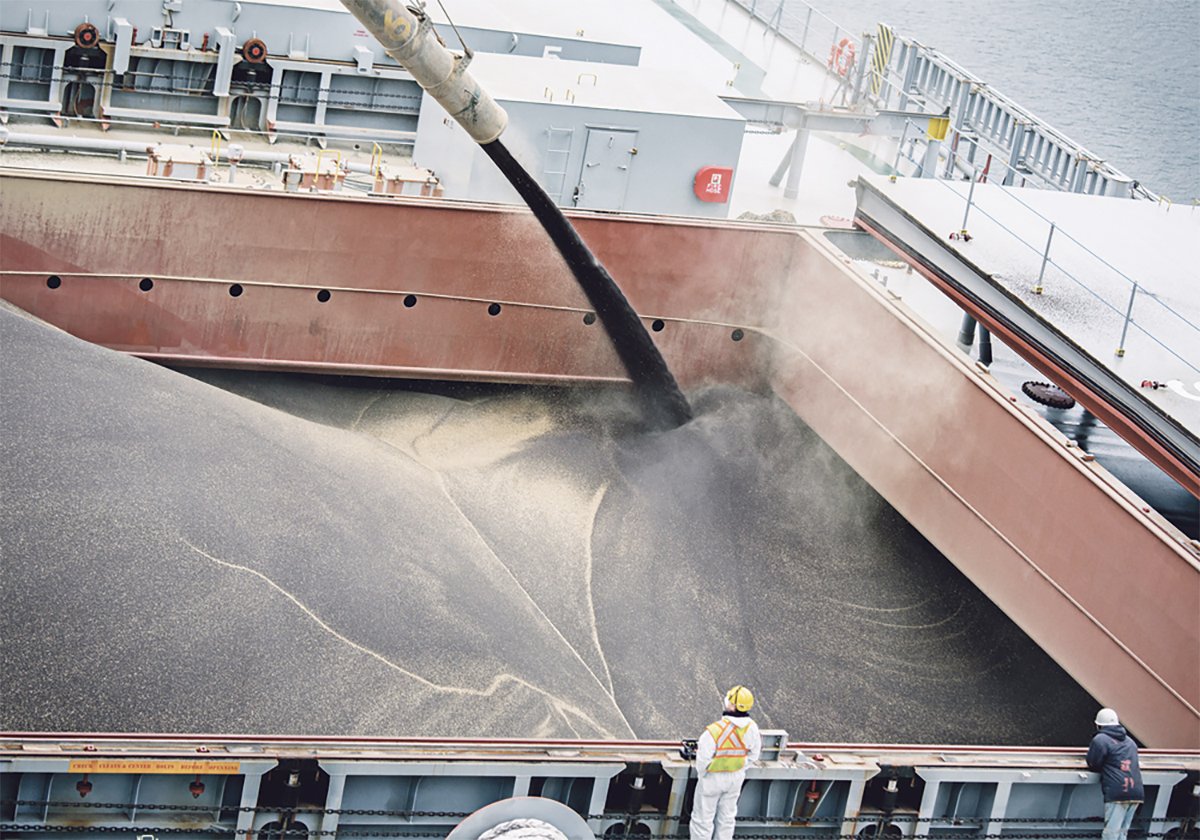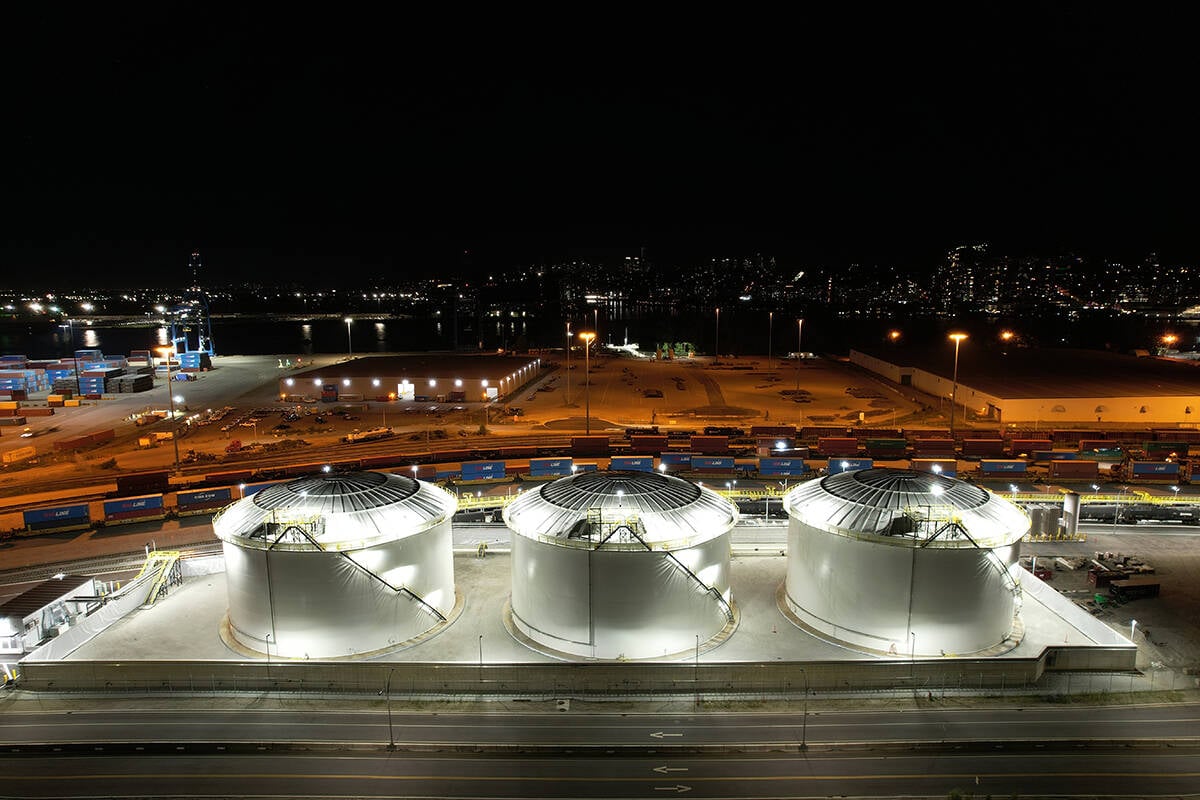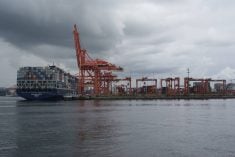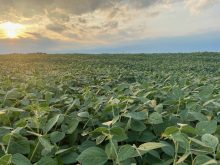SASKATOON — Canada has a new way of getting canola oil to markets around the world.
DP World in Canada recently opened its $150 million canola oil transload facility at its Fraser Surrey terminal at the Port of Vancouver.
The facility is capable of exporting one million tonnes of canola oil per year.
Read Also

Exports off to a slow start after last year’s torrid pace
Canadian grain, oilseed and pulse exports are off to a slow start, but there are some bright spots, according to the Canadian Grain Commission’s most recent weekly export data report.
DP World is a global logistics company operating 560 offices in more than 70 countries around the world.
“We have invested $42 billion into infrastructure around the world, so we’re not small,” said Doug Smith, chief executive officer of DP World in Canada.
However, the company is not well known in Canada, and Smith is hoping this project helps boost its profile in this country.
The company operates five terminals at ports in Canada, with four of them located on the West Coast and the other in Saint John, N.B.
DP World partnered with Richardson International for the latest project.
DP World built the transload facility, and Richardson has committed to using two of the three 15,000 tonne storage tanks.
Richardson has first rights on the third tank as well, but if it doesn’t need it, DP World will find another crusher with which to work .
“DP World’s new facility strengthens our ability to compete in global markets by enhancing both canola oil capacity and supply chain reliability,” Tom Hamilton, executive vice-president, agribusiness operations, at Richardson said in a press release.
“This investment streamlines the critical connection between Prairie production and coastal shipping, allowing Richardson to respond to growing customer demand even further and deliver Canadian canola oil more efficiently to buyers around the world.”
The facility accepts bulker tank rail cars that are gravity unloaded at two different spots. Thirty-five cars can be unloaded at each rail spur.
The oil is then transferred to the storage tanks. A pipeline is used to load vessels when they show up at the berth.
Smith said the facility might get 10,000 tonnes of oil from the trains and will load 20,000 to 30,000 tonnes onto a vessel.
The original plan was to sell most of the oil to the United States where it would be turned into biofuel, collect the blender’s tax credit and head back to Canada.
However, the blender’s tax credit was eliminated at the start of 2025 and replaced with the 45Z producer tax credit, which is not available to biofuel made with Canadian canola oil.
The other main market was going to be China. However, that market was eliminated when the Chinese government placed a 100 per cent tariff on Canadian canola oil in March .
“Talking to my contacts at Richardson, even though these things are happening, there’s still opportunity,” said Smith.
Canada exported 3.5 million tonnes of canola oil in 2024, with the United States accounting for 95 per cent of sales that year.
It has not been as dominant a market this year, accounting for 70 per cent of the 1.83 million tonnes shipped through the first seven months of 2025.
Smith said the U.S. is still buying a lot of oil, and he remains optimistic about the Chinese market coming back.
“If that opens up, it’s going to be a massive flow,” he said.
In the meantime, there are other potential markets that will buy Canadian canola oil.
“I’m still waiting for Richardson to tell me which ones they’re looking at. It’s not us directing it, it’s really them,” said Smith.
The company has already filled four vessels, so it has worked out the kinks.
Smith said it is no longer about ramping up production and all about ramping up sales, with the company preparing to handle one ship a week.
DP World is already contemplating a second phase of the project.
The first phase is dedicated to food grade canola oil and can’t be used for anything else.
The second phase would be a broader spectrum project with special tanks that can be cleaned and used to store other edible oils such as soybean oil.
“That’s a whole different design,” he said.
There would be smaller and larger tanks and the ability to mix oils.
The company will be having that conversation in about six months after it has a better handle on how the first phase is progressing.
Phase two would take two years to build.
“We’re eager for growth,” said Smith.
“There’s a lot more opportunity. I don’t think we are anywhere near tapped into what we could do next.”


















